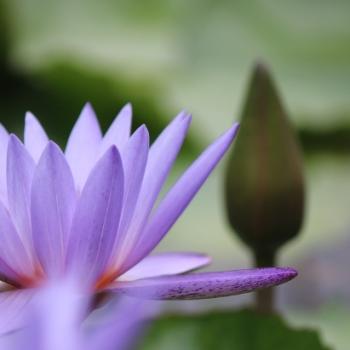
Hatha Yoga is traditionally defined as a part of Raja Yoga. It is comprised of the terms Ha (sun) and Tha (moon). Hatha Yoga is meant to balance the energy flow in the body, ignite the life energy or prana through breathing exercises and postures, and eventually lead to the kindling of the Kundalini energy, which is said to lie dormant at the base of the spine. When Hatha Yoga is practiced fully, it becomes the real Kundalini Yoga.
Hatha Yoga has six components: Ethical guidelines (yama and niyama), postures (asana), breath or energy control/expansion (pranayama), energy locks (bandhas) and six cleansing techniques (shat kriyas).
Health Benefits
Hatha Yoga is usually practiced for health reasons. In that form, it has gained tremendous popularity in the West. Most people who practice simple postures and breathing techniques experience significant health benefits. Regular practice has been shown to strengthen the core muscles, reduce tensions in the major muscle groups and ligaments, strengthen and stretch the extremities, improve digestion, stimulate the endocrine system, improve hormonal balance, increase blood flow to all areas in the body, decrease discomfort in the joints, increase oxygen flow, and the list can go on.
It is no wonder that Hatha Yoga—and all other trademark versions of this physical approach—have become so popular in the West. With all its health benefits and relaxing qualities, those who have not yet tried it should take the first step and become convinced.
Seven Categories of Postures
When practicing Hatha Yoga, especially postures (asanas), be sure to include practices from all the following seven categories to get the major health benefits.
1) Warm-ups and strengthening; sun salutations, plank, Indian pushups, abdominal and back strengthening, warrior pose and other standing postures.
2) Inverted postures; headstand (advanced), shoulderstand and plow, or other postures that invert the body and increase blood flow to the abdomen, spine and head.
3) Forward bends; sitting or standing forward bends to stretch the back of the legs, the spine and back, and to massage the internal organs.
4) Backward bends; cobra, bridge, wheel, fish, bow or other similar poses that bend the spine back to stimulate the kidneys, relieve tension in the back, stretch the abdomen, hips, front of legs and neck, stimulate the thyroid and in some cases massage the internal organs.
5) Spinal twists; standing or lying down spinal twists to limber up the spine, massage internal organs and stimulate/balance the nervous system.
6) Meditation poses; lotus, half lotus, cross-legged position or sitting on heels, with the back straight and the head, neck and spine vertically aligned.
7) Relaxation poses; such as the corpse pose to relax the body and assimilate all the benefits of the physical practice.
Any variation of Hatha Yoga, no matter how it has been branded, should be comprised of at least one pose from each of these categories and include breathing practices to offer the full benefits of Hatha Yoga.
Life Energy (Prana)
The ultimate goal of Hatha Yoga focuses on the control and expansion of life energy or prana. According to the ancient texts of yoga philosophy, the control of prana can result in the kindling of Kundalini (intense spiritual energy which generates instant enlightenment according to the scriptures). But, according to Yogi Shanti Desai, the Kundalini concept is highly theoretical, whereas increased control of prana is accessible to all.
Pranayama, Bandhas, and Mudras
The control and expansion of prana is gained through breathing (pranayama), energy locks (bandhas) and controlled postures (mudras), which resemble asanas but are held for longer periods. These practices require the body to be healthy, strong, flexible, and free from tension and restlessness. Controlling the breath eventually leads to more control over prana, which flows through energy channels called nadis, a system very similar to the nervous system.
Nervous System for the Astral Body
Yoga philosophy makes a clear distinction between the nerves and nadis, maintaining that the 72.000 nadis are the nervous system of the astral body. Of the reported 72.000 nadis, there are three main energy channels: Ida (feminine current), Pingala (masculine current) and Shushumna, the primary energy channel which lies adjacent to the spine.
Interestingly, the three energy channels form the international medical sign, which is a staff (Shushumna) enveloped by two snakes (Ida and Pingala).
The Seven Chakras
Along the pathway of the spine or Shushumna, there are, reportedly, seven energy wheels or chakras, from the tailbone to the crown of the head. The end goal of Hatha or Kundalini Yoga is to control prana or the life energy in such a way that the energy flows evenly through the channels of Ida and Pingala, thus kindling the Kundalini energy at the base of the spine and channeling it up through Shushumna, igniting every chakra or energy wheel on the way.
Increase Control of Prana
The ideology surrounding the Kundalini energy is very enticing. However, both my teachers, Yogi Shanti Desai and Sri Yogi Hari, say that they have not entirely awakened this energy despite decades of practice. On the other hand, both of them have increased control over their life energy or prana. That should be the goal of the average yoga practitioner.
Kundalini Warnings
In most of the yoga books I have read, the yoga practitioner is warned against trying to prematurely awaken or kindle the Kundalini energy, especially without the guidance of an experienced teacher who has already mastered the path (of which there may be fewer than reported). The reason is that this energy is reportedly extremely powerful and possibly volatile. Minor physical aches, pains, and mental instabilities (such as obsessions, depression and other mental illnesses) can increase exponentially if the practitioner prematurely kindles the Kundalini energy.
Warnings say that premature kindling can result in severe health problems and even lead to insanity. That is one more reason why it is important to practice physical cleansing (shat kriyas) and increase mental resilience by following the ethical guidelines (yama and niyama).
Basic Hatha Yoga is Safe
Practicing the postures and breathing exercises related to Hatha Yoga has positive effects, so long as the practitioner doesn’t overuse the energy locks (bandhas) and controlled postures (mudras).
The primary purpose of Hatha Yoga for the regular practitioner should be to condition the body to sit still for long periods without becoming stiff or restless, thus enabling the practitioner to enter the state of meditation.
Swami Sivananda said:
“Health is the greatest wealth; peace of mind is the greatest blessing. Yoga gives you both.”
Gudjon Bergmann
Author and Mindfulness Teacher
Amazon Author Profile
Recommended books:
- Monk of All Faiths: Inspired by The Prophet (fiction)
- Spiritual in My Own Way (memoir)
- Co-Human Harmony: Using Our Shared Humanity to Bridge Divides (nonfiction)
- Experifaith: At the Heart of Every Religion (nonfiction)
- Premature Holiness: Five Weeks at the Ashram (novel)
- The Meditating Psychiatrist Who Tried to Kill Himself (novel)
Picture: CC0 License
p.s. I have taught yoga since 1998. I studied with Yogi Shanti Desai and Sri Yogi Hari and am registered at the highest level with Yoga Alliance. This article was curated from my book titled Know Thyself: Yoga Philosophy Made Accessible
Read other articles in this series:












